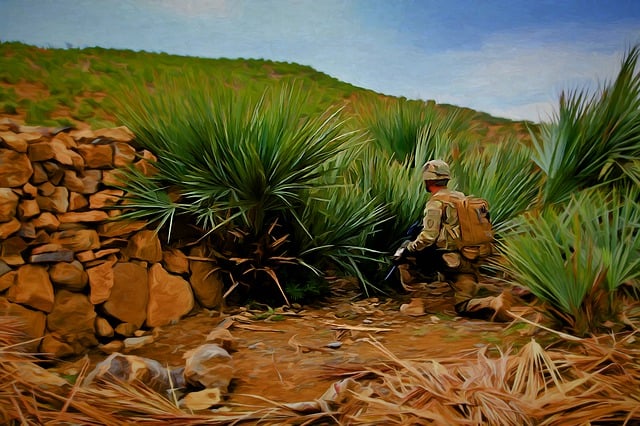Media teams in conflict zones face heightened risks due to uncertainty, violence, and rapidly changing dynamics. To ensure their safety, specialized equipment like encryption software, body-worn cameras, geolocation tracking devices, signal jammers, and RF blockers are crucial. Comprehensive training covering first aid, emergency response, advanced tactics, risk assessment, crisis communication, personal security, and local dynamics is essential for effective operations. Building local partnerships enhances high-profile security for media professionals by providing real-time information and improved safety protocols. Balancing responsible reporting with personal safety requires prioritizing high-profile security as a foundational aspect of operations to safeguard journalists and maintain news integrity in volatile regions.
In the heart of conflict zones, media teams face unprecedented risks. “Comprehensive Safety Measures for Media Teams in Conflict Zones” explores essential strategies to safeguard these vital information carriers. From understanding escalating dangers to leveraging advanced technology, this article delves into key components ensuring high-profile security for media professionals. We examine training, local partnerships, ethical reporting, and more, providing a holistic approach to navigate treacherous environments.
Understanding the Risks: Media Exposure in Conflict Zones
Media teams operating in conflict zones face unique and significant risks, requiring a comprehensive understanding of the environment they enter. Conflict areas are often characterized by high levels of uncertainty, violence, and rapid-changing dynamics, posing substantial challenges to their safety. Every mission entails navigating through complex networks of armed groups, political tensions, and potential landmines—a stark contrast to the controlled environments journalists typically work in.
The exposure of media professionals to such settings demands heightened awareness and robust security protocols. High-profile security for media professionals is paramount, as they often become targets due to their visibility and ability to document sensitive events. This vulnerability necessitates a tailored approach to safety measures, ensuring not only physical protection but also the preservation of critical equipment and the integrity of their reporting.
Essential Tools for High-Profile Security: Equipment and Technology
In the realm of high-profile security for media professionals operating in conflict zones, specialized equipment and technology play a pivotal role. These tools are designed to protect against escalating threats, enabling journalists to capture and transmit critical stories safely. From advanced encryption software that secures communications to robust body-worn cameras with enhanced night vision capabilities, each piece contributes to a layered defense strategy.
Geolocation tracking devices, for instance, ensure real-time monitoring of team members’ safety, allowing rapid response in case of emergencies. Additionally, portable signal jammers and radio frequency (RF) blockers safeguard against unauthorized surveillance and the risk of entrapment through electronic interception. These technologies empower media teams to navigate treacherous landscapes with enhanced visibility, resilience, and peace of mind, ultimately facilitating their vital work in sharing accurate information during tumultuous times.
Training and Preparedness: Equipping Media Professionals with Life-Saving Skills
Media teams operating in conflict zones face unique and severe challenges that demand specialized training and preparedness. Equipping these professionals with high-profile security skills is paramount to ensuring their safety and effectiveness amidst intense danger. Comprehensive training programs should cover a range of topics, from basic first aid and emergency response to advanced tactics for navigating hostile environments.
The ability to quickly assess and mitigate risks, communicate effectively during crises, and maintain personal security is crucial. Media workers must also be schooled in recognizing and avoiding potential traps, understanding local dynamics, and cultivating relationships with trusted sources and locals who can provide valuable insights and protection. Such preparation enables media professionals to operate with greater confidence, thereby enhancing their ability to deliver critical information while keeping themselves safe in conflict zones.
Building Local Partnerships: Navigating Safety with Community Support
Building local partnerships is a strategic move for media teams operating in conflict zones, offering invaluable support in ensuring high-profile security. By engaging with community leaders, organizations, and residents, media professionals can gain valuable insights into potential risks and safe routes. These partnerships facilitate better understanding of local dynamics, cultural norms, and emerging threats, enhancing the team’s ability to adapt their safety protocols.
Community support provides a layer of protection that extends beyond traditional security measures. Locals can offer real-time information on changing conditions, alert media teams to dangerous areas, and even serve as informants or guides. This collaborative approach not only improves safety but also fosters trust and respect between media outlets and the communities they serve, leading to more accurate and sensitive reporting in volatile environments.
Ethical Considerations: Responsible Reporting and Personal Safety First
In conflict zones, media teams face unique challenges that demand a delicate balance between responsible reporting and personal safety. As storytelling becomes increasingly globalized, journalists and their teams often find themselves embedded in high-risk environments, where every decision can have profound implications. Ethical considerations are paramount; not just for the integrity of the news but also for the well-being of those on the ground.
Prioritizing personal security is non-negotiable. High-profile security for media professionals must be a cornerstone of any operation. This includes robust training in conflict zone navigation, risk assessment, and crisis management. Additionally, teams should be equipped with state-of-the-art communication devices and provided with clear protocols for exiting dangerous situations. By ensuring the safety of media professionals, we not only protect valuable human lives but also maintain the credibility and integrity of news reporting from these volatile regions.
Media teams venturing into conflict zones face significant risks, but with comprehensive safety measures, they can mitigate these dangers. By combining advanced high-profile security equipment, thorough training, local partnerships, and ethical reporting practices, media professionals can better navigate dangerous environments. Prioritizing personal safety and embracing community support are key to ensuring the well-being of these essential storytellers.
